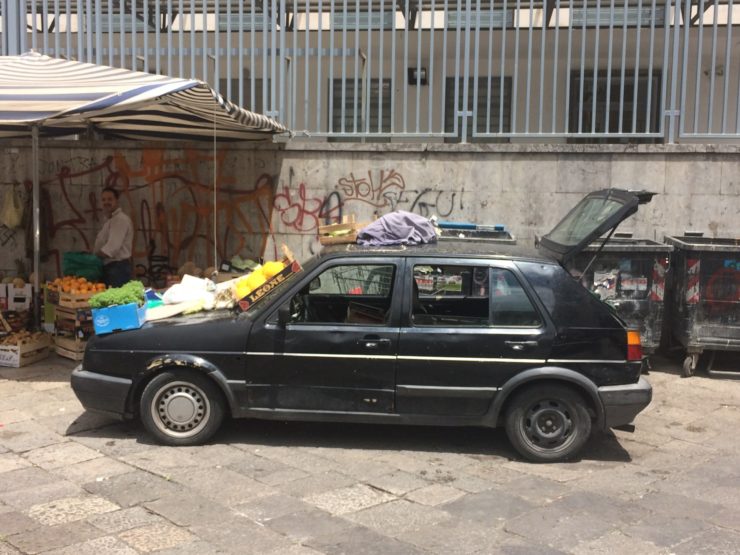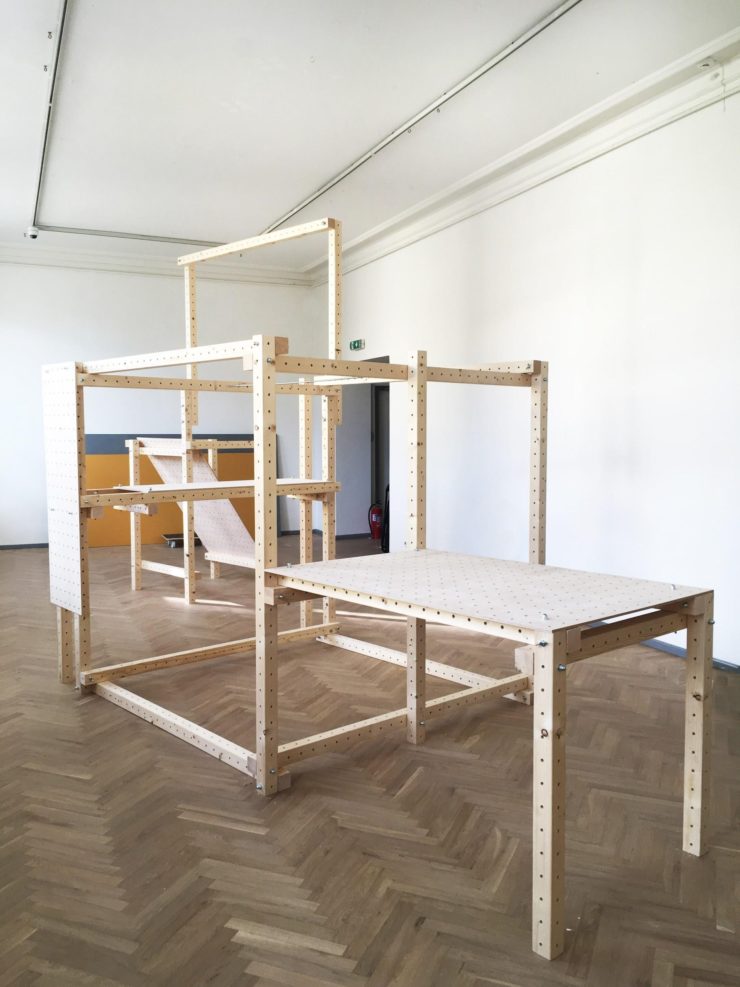Seminar Blogs
“The display as a publishing tool” – Freja Kir
This piece of small writing forms the fourth part in a series covering different methods on current perspectives for measuring transmissions in motions. The writings specifically draw on references and inspiration shared from the seminar of the same title hosted by the University of Utrecht during the first half of 2020. Throughout the writings, the intention is set to unpack approaches for measuring tools, instruments, and imagination as bridges between unconventional and scientific methods. Following a focus on Loud tools, a Horizon of beats as measuring tools, and a consideration of Infrastructure of theatrical tools this fourth contribution dwells with the definition of publishing and through this objective looks to the display as a tool for sharing.
Ways of seeing publishing:

Published fruit in Palermo, 2018, photo by Freja Kir
We find ourselves in twisted times. This is traceable in our ways of remixing, distributing, and interacting. In this light, one may approach the notion of publishing in multiple ways. When tools change the reality of publishing likewise follows. Several landmark moments such as the telegraph, the radio, and the internet stand out when addressing tools for publishing, and while these instruments differ from each other, they share the fact that they have all been modified for the benefit of publishing. In the light of this focus, this writing corresponds to the lecture Post-Publishing and Performative Publications presented by professor Janneke Adema from the Digital Media at the Centre for Postdigital Cultures at Coventry University. With a careful focus on the processual and performative nature of publishing, Adema lays out a wide consideration of “conventional distinctions between publishing (as the activity of making information available to the public) and diverse forms of research are blurring” (Adema, 2016). Introducing this focus serves the purpose of bridging between bent and scientific methods (Miyazaki, 2018). Based on this array of hybrid approaches to publishing, this writing specifically considers publishing as a means of displaying. This begs the questions: How does the display exist as a publishing tool?
Ways of navigating the display
The display, as well as the publishing, provide forms of narration, and direction of the story. They enable transactions and limit access. Ultimately, they are never biased but always constructed. In extension of these thoughts, the reflections from my own work experience inevitably play a noteworthy role when considering more concretely the display as a form of publishing. As a co-director of the platform and studio, fanfare1, I have participated in an uncountable amount of visual and strategic discussions. One aspect of the debate that specifically falls in line with this post, is the consideration to which publishing unfolds along with navigation and interaction.

fanfare display design (2014 – 2020) by Freja Kir and Lotte van de Hoef, Photo from Signals of the Periphery, Tallinn Art Hall, 2017
How does the form of the display perform what is published?
Publishing on display
A display carries a story to tell. It considers the potential audience, and assists in the navigation of the narrative. In this context, a display system is likewise understood as a support for publishing. As such the display system may exist as a playful friend for interaction, a guiding instrument for narration, and a manipulative tool for navigation. In a similar line of thought, the way we approach publishing is linked with our orientation and attention to direct, and accordingly taps into the organisation of narratives and moveability.
References:
- Brügger, N. Web historiography and internet studies: Challenges and perspectives. New Media & Society 15(5), 752 –764, 2013
- Miyazaki, S., ALGORHYTHMICS: A Diffractive Approach for Understanding Computation, The Routledge Companion to Media Studies and Digital Humanities, Routledge, 2018
- Adema, J., & Hall, G., Posthumanities: The Dark Side of “The Dark Side of the Digital”, Volume 19, Issue 2: Disrupting the Humanities: Towards Posthumanities, Fall 2016
Image:
Published fruit in Palermo, 2018, photo by Freja Kir
fanfare display design (2014 – 2020) by Freja Kir and Lotte van de Hoef, Photo from Signals of the Periphery, Tallinn Art Hall, 2017
How does the form of the display perform what is published?
Note:
fanfare is a collaborative design platform and studio founded in October 2014 in order to encourage development and collaboration across fields of visual communication and design. The activities of fanfare are composed of research, talks and exhibitions. Through an experimental objective, there is a keen focus on exploring design as the core for social engagement.
Note:
Some of the material of this post is continued from Freja Kir, Platform Pace(2019) & Hybrid Distraction(2018)

